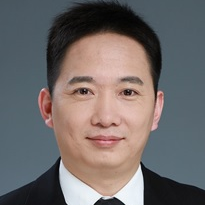Selected papers from ISMTMF-2019
A special issue of Sensors (ISSN 1424-8220). This special issue belongs to the section "Physical Sensors".
Deadline for manuscript submissions: closed (30 September 2020) | Viewed by 7312
Special Issue Editors
Interests: nuclear safety; thermal hydrodynamics; process instrumentation; transportation of radioactive materials; vitrified waste storage; deep geological repository; solar energy system; solar power system; robotic measurement
Special Issues, Collections and Topics in MDPI journals
Interests: process measurement and instrumentation; process tomography
Special Issues, Collections and Topics in MDPI journals
Special Issue Information
Dear Colleagues,
Measurement of multiphase flow has been a challenging topic in the process industries and flow mechanism research, such as chemical engineering, nuclear engineering, food engineering, and biomedical engineering. Development of new sensing techniques is significant to monitor, model, and then control such a complex process. It is thus considered one of the ultimate challenges in industrial measurement and instrumentation.
Following the successful event of International Symposium on Measurement Techniques for Multiphase Flows (ISMTMF-2019), this Special Issue will select a set of papers of high quality while also closely related to the topic of sensors from conference proceedings, but after a thorough technical extension. All submitted papers will undertake the same review procedure as ordinary submissions but by the reviewers in the most focused field. We hope this Special Issue will present the latest development and the state-of-art sensing technologies of multiphase flow in various fields.
Prof. Dr. Chao Tan
Prof. Dr. Hiroshige Kikura
Guest Editors
Manuscript Submission Information
Manuscripts should be submitted online at www.mdpi.com by registering and logging in to this website. Once you are registered, click here to go to the submission form. Manuscripts can be submitted until the deadline. All submissions that pass pre-check are peer-reviewed. Accepted papers will be published continuously in the journal (as soon as accepted) and will be listed together on the special issue website. Research articles, review articles as well as short communications are invited. For planned papers, a title and short abstract (about 100 words) can be sent to the Editorial Office for announcement on this website.
Submitted manuscripts should not have been published previously, nor be under consideration for publication elsewhere (except conference proceedings papers). All manuscripts are thoroughly refereed through a single-blind peer-review process. A guide for authors and other relevant information for submission of manuscripts is available on the Instructions for Authors page. Sensors is an international peer-reviewed open access semimonthly journal published by MDPI.
Please visit the Instructions for Authors page before submitting a manuscript. The Article Processing Charge (APC) for publication in this open access journal is 2600 CHF (Swiss Francs). Submitted papers should be well formatted and use good English. Authors may use MDPI's English editing service prior to publication or during author revisions.
Keywords
- Multiphase flow
- Process tomography and measurement
- Flow measurement and instrumentation
- Complex process diagnosis







